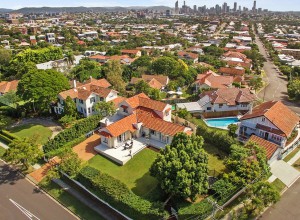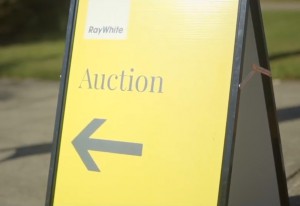There are more interesting articles, commentaries and analyst reports on the Web every week than anyone could read in a month.
Each Saturday morning I like to share some of the ones I’ve read during the week.
The weekend will be over before you know it, so enjoy some weekend reading.
‘We’re seeing a lot of activity’: What the early signs reveal about the prestige spring market
What do we know about the prestige spring market so far?
An article on Domain.com.au looks at what we can expect.
Economic headwinds sweeping the world are failing to dent the prestige property market, with prices in most Australian capital cities showing growth over the past year and projections the rate will increase over 2020.
“There’s still a difference between the mainstream market, which fell into negative territory, and the prime market,” says Knight Frank research director Michelle Ciesielski.
“The prime market has really held up, being less reliant on funding and now, in spring, we’re seeing a lot of activity.
There’s a lot more confidence now post-election and with interest rate cuts, and that’s flowing into prestige property,” he adds.
Sydney’s prime market prices grew by 2.5 per cent over the past year, and are expected to advance 3 per cent over 2020, Melbourne’s are up 2.1 per cent, Brisbane 2.2 per cent and the Gold Coast 1.1 per cent, says Ciesielski.
Her optimism is supported by strong auction clearance rates for homes in high-end areas, according to Domain Group research analyst Eliza Owen.
“We’re seeing the property cycle moving back into an upswing in Sydney and Melbourne, and generally we see the higher end of the market moving first,” she says.
“So in Sydney, for instance, we saw the lower north shore with a rate of 80 per cent for August – compared to the general rate of 72 per cent – and in Melbourne’s inner east 77 per cent against the main 70 per cent.
We’re also seeing more auctions happening, with volumes rising and less time on market.”
Brisbane and the Gold Coast prestige markets are still lagging behind, Owen says, but are expected to stabilise by the end of the year.
“We’re finding the prestige market is strong for good-quality property at the moment, especially in the $10 million to $15 million range,” Sydney agent Randall Kemp of Ray White Woollahra says.
It’s a confidence mirrored by Savills Victoria state director Clinton Baxter in Melbourne.
“There’s been a real uplift in confidence throughout the market, and particularly in prestige, over the past couple of months with strong auction results,” he says.
“Transactions are now occurring a lot more rapidly and FOMO [Fear of Missing Out] is kicking in, and the impact of social unrest in Hong Kong is being felt, with the uber-rich in Hong Kong and China looking at prestige property here.”
Read the full article here
Did APRA ignite the housing market?
Has the housing market taken a turn?
This Blog by Pete Wargen explains what’s going on.
Turned on a dime?
The Grattan Institute indulged in a bit of gentle chartsplaining this week to claim that the post-election rebound in housing prices was unrelated to the election result, or to ongoing cuts to mortgage rates, but instead ‘rocketing’ house prices were sparked by the prudential regulator APRA and its loosening serviceability criteria.
There is some background here, of course.
Grattan had previously argued that Labor’s election policies would have an immaterial impact on housing prices (contrasting with RiskWise’s more detailed modelling, which suggested a 9 per cent adverse impact nationwide).
Grattan’s latest argument is that since CoreLogic’s revered daily home value index didn’t lift significantly until August 12 the impact of the election was minimal – causing only a 0.14 per cent ‘jump’ in prices – while the impacts of the interest rate cuts in June and July wouldn’t be seen in full for a couple of years.
In other words, the rebound was all about APRA.
I’ve recreated the below chart from CoreLogic’s daily index, which does indeed show a sudden increase from mid-August, although truthfully the rebound looks a lot less dramatic when you use a sensible y-axis and take into account the declines over the preceding couple of years.
There are a few problems with Grattan’s arguments, though.
Read the full article here
Australians are moving house less often
It looks like we are moving houses less and less.
In this article for Switzer, John McGrath looks at why Australian home owners are staying put.
Australian home owners are staying at the same address for longer than ever before, with a new report showing the average length of ownership for both houses and apartments is rising rapidly.
According to CoreLogic, house owners are staying put for four years longer than they did a decade ago.
Apartment owners are keeping their properties for three years more than the 2009 average.
Nationally, the length of ownership has risen to 11.3 years for houses and 9.6 years for apartments.
This has been an ongoing trend since 2005 and is happening in parallel with a declining number of sales per year.
I think the No 1 reason people are staying put longer is the high transition costs of moving house.
Upgrading families in major cities are paying close to $100,000 in fees and taxes.
That doesn’t include the additional purchase price or borrowings – it’s basically just to make the move.
Most of that $100,000 is the absurd cost of stamp duty, which is nowadays out of touch with reality.
Take a look at the stats.
According to CoreLogic, the average hold period for houses is highest in Sydney and Melbourne at about 12-and-a-half years. Back in 2009, Sydney and Melbourne houses were turning over about every nine years.
These are Australia’s two most expensive markets, which implies a connection between high and rising costs of housing and how often people are willing to move.
Firstly, rising property prices have a bearing on borrowing capacity.
Some people simply can’t borrow enough, based on their earnings, to upgrade to a larger home at today’s market values.
Secondly and more importantly, rising property prices also impact transition costs.
The higher your purchase price, the higher your stamp duty, so upgraders are the worst affected.
Let’s take a look at the tenure periods for cities and regional areas and how far they’ve increased over the past 10 years.
Greater Sydney
Average house ownership: 12.4 years in 2019 compared to 9 years in 2009
Average apartment ownership: 9.6 years in 2019 compared to 7.3 years in 2009
Rest of NSW
Average house ownership: 10.5 years in 2019 compared to 7.7 years in 2009
Average apartment ownership: 9.2 years in 2019 compared to 6.8 years in 2009
Greater Melbourne
Average house ownership: 12.5 years in 2019 compared to 8.7 years in 2009
Average apartment ownership: 9.3 years in 2019 compared to 7.1 years in 2009
Rest of Victoria
Average house ownership: 11.1 years in 2019 compared to 8.5 years in 2009
Average apartment ownership: 9.8 years in 2019 compared to 7.7 years in 2009
Greater Brisbane
Average house ownership: 11.3 years in 2019 compared to 7 years in 2009
Average apartment ownership: 9.8 years in 2019 compared to 5.8 years in 2009
Rest of Queensland
Average house ownership: 11.1 years in 2019 compared to 6.5 years in 2009
Average apartment ownership: 9.8 years in 2019 compared to 5.9 years in 2009
Australian Capital Territory
Average house ownership: 10.9 years in 2019 compared to 7.1 years in 2009
Average apartment ownership: 8.7 years in 2019 compared to 6.4 years in 2009
Greater Adelaide
Average house ownership: 10.1 years in 2019 compared to 6.1 years in 2009
Average apartment ownership: 9.6 years in 2019 compared to 5.7 years in 2009
Rest of South Australia
Average house ownership: 10.8 years in 2019 compared to 6 years in 2009
Average apartment ownership: 9.9 years in 2019 compared to 5.9 years in 2009
Greater Perth
Average house ownership: 11 years in 2019 compared to 6.2 years in 2009
Average apartment ownership: 10.8 years in 2019 compared to 5.9 years in 2009
Rest of Western Australia
Average house ownership: 10.9 years in 2019 compared to 5.7 years in 2009
Average apartment ownership: 10.2 years in 2019 compared to 5.5 years in 2009
Greater Hobart
Average house ownership: 10.9 years in 2019 compared to 7.6 years in 2009
Average apartment ownership: 9.6 years in 2019 compared to 7 years in 2009
Rest of TAS
Average house ownership: 10.7 years in 2019 compared to 7.4 years in 2009
Average apartment ownership: 9.1 years in 2019 compared to 7.2 years in 2009
Greater Darwin
Average house ownership: 9.2 years in 2019 compared to 4 years in 2009
Average apartment ownership: 9.5 years in 2019 compared to 4 years in 2009
Rest of Northern Territory
Average house ownership: 8.9 years in 2019 compared to 4.5 years in 2009
Average apartment ownership: 8 years in 2019 compared to 3.9 years in 2009
Source: CoreLogic
Breaking the data down further into council areas, the top 10 list of areas for longest ownership is dominated by Melbourne, Sydney and regional Queensland.
Longest ownership of houses by council area
- Monash, VIC 17.1 years
- Queenscliffe, VIC 16.6 years
- Whitehorse, VIC 16.2 years
- Hornsby, NSW 16.2 years
- Manningham, VIC 16.2 years
- Hinchinbrook, QLD 16 years
- Knox, VIC 15.7 years
- Canada Bay, NSW 15.7 years
- Banyule, VIC 15.6 years
- Blackall-Tambo, QLD 15.6 years
Longest ownership of apartments by council area
- Armadale, WA 13.4 years
- Swan Hill, VIC 13.4 years
- Albany, WA 13.1 years
- Cassowary Coast, QLD, 12.8 years
- Wangaratta, VIC 12.7 years
- South Burnett, QLD 12.7 years
- Tablelands, QLD 12.6 years
- Bayswater, WA 12.5 years
- Mosman Park, WA 12.4 years
- Colac-Otway, VIC 12.3 years
Source: CoreLogic
Stamp duty is the issue that nobody wants to talk about in Government, on either side.
Read the full article here
Property market has a spring in its step, but a rebound is not yet in the bag
While there are positive signs of a ‘spring’ in the market, some say it’s not the full picture.
An article on ABC News outlines why the market isn’t reaching a rebound yet.
The tentative shoots of the housing sector’s recovery have continued to emerge.
Another solid Saturday of auction results has fired up optimism that what has been, historically speaking, a fairly minor correction, may be over.
In Sydney preliminary clearances look like hitting 75 per cent.
Melbourne was closer to 80 per cent.
If that is the worst of it, things haven’t been too bad.
Sure, Sydney house prices fell 15 per cent from their peak to what appears the market’s bottom around May or June.
Melbourne top to bottom looks like being a bit more than 10 per cent, which was about average across capital cities.
Perth with a 20 per cent slump (so far) and Darwin down 30 per cent have been the painfully significant outliers.
The August house price bounce was particularly vigorous, up 1 per cent nationally.
Current clearance rates running at around 70 per cent point to further gains, although there is the caveat — a record low number of homes up for sale is dragging down the supply bit of the supply/demand dynamic.
Head of property consultants SQM Research Louis Christopher says while clearance rates remain strong, they are still down a bit on last year.
“Normally, clearance rates tend to fall due to the seasonal rises in volumes,” Mr Christopher tweeted at the close of business.
“Certainly, more buyers out there. But are the banks handling the increased loan applications?
“I am hearing the banks are struggling, with the result being many loan approvals are only just making settlement day, and sometimes going over at no fault of the buyer.”
But will a springtime rebound be enough to sustain a broader economic recovery?
There certainly hopeful signs, but a lot will need to go right.
Low auction volumes supporting prices
Beneath the headlines of house prices stabilising, and even edging up, are many of the same old problems; tight credit, high household debt and a big backlog of soon-to-be-completed apartments that is about to be dumped on a still wobbly market.
If something puts a solid base under a housing recovery, and therefore a broader economic recovery, it probably needs to be more money in the punters’ pockets.
Ideally it would be through higher wages, lower taxes or even lower borrowing costs rather than heavier doses of debt.
The rise in Sydney and Melbourne prices reflects an improvement in demand from home-buyers, but as Morgan Stanley’s Chris Read says, it has been “amplified” by slim-pickings under the hammer.
Mr Read argues while sales volumes are likely to increase, structural headwinds such as lower investor activity mean any pick-up is likely to be gradual.
“Near-term prices may stay supported, but we still expect sustained recovery to be linked to fiscal policy, not re-leverage.
“Stronger price and clearance signals are likely to persist in the near term, although the transmission to the broader housing market and economy will be lower than in the past.”
The big question is whether the recovery is strong enough to be sustained and not thwarted again by higher prices and more properties coming on to the market.
Credit is the key
Westpac’s economics team has a relatively positive view on things, arguing the market will likely put on almost 15 per cent from its June low to the end of 2020.
However, the bank says it all comes down to lending — which is not surprising given the Sydney and Melbourne corrections were in lock-step with a 15 per cent fall in new loans over the second half of last year.
Credit has remained tight for most of this year, but June and July saw an 8 per cent spurt in home loans.
Investor loans rose 5 per cent in July alone, but still remain 20 per cent down over the year.
“Banks are likely addressing their issues in the aftermath of the Royal Commission and adopting a more commercial approach to lending,” Westpac said.
A flood of new high-rise apartments heading for the market is not the sort of thing to fire up prices, but Westpac argues the impact is unlikely to spread across all residential property.
“Although we expect upward pressure on existing dwelling prices the oversupply and building quality concerns are likely to weigh on the prices of new apartment developments as they come to market creating a two tier market,” the bank noted.
Trough of rebound?
Morgan Stanley’s Mr Read says housing credit remaining a significant weakness is one thing, but the construction side of the housing cycle continuing to roll over is another — and is has an even more important impact on the real economy.
Rising house prices increasing household net worth and therefore spending, and increased property turnover drives spending in homeware and hardware stores, are positives.
Falling construction activity is a big negative.
“As it continues to decline, this will affect household jobs growth and therefore income and spending,” Mr Read said.
“Economic growth in Australia remains very low at 1.4 per cent [over the year] and we expect only a gradual recovery from here.
“This is a challenging environment for housing demand, particular because we expect the decline in construction activity to affect the labour market and increase unemployment.”
The Morgan Stanley view is the market is still in a trough and not a rebound.
Another interest rate cut, or two, might help at the margins, but that’s about it according to Mr Read.
Read the full article here
Numerology and what it means for your house
What does the number of your house really mean?
According to an article on Realestate.com.au there’s a lot more to a number than we think.
Have you ever wondered if your house number means anything or if you have one of those lucky house numbers that buyers go nuts over?
If you’re a superstitious type – or believe the meaning of your house number and your address can in fact change the energy within your home – then you may be interested to know.
Don’t care for superstitions?
If you’re an investor, knowing the lucky house numbers certain buyers love and hate could help you target the right market when you rent your property.
Selling up? If you’re lucky number three, then your property could be worth more to the right buyer.
Working out your ‘number’
Brisbane psychic, numerologist and palm reader Sarah Yip says to work out the numerological number of your house, add its numbers until you arrive at a single digit.
For example, if your house number is 66, then its numerological number is 3 (6+6=12; 1+2=3). If you live at 34/7 add 3+4+7=14; 1+4=5.
Here, Sarah reveals the numerological meanings behind numbers one to nine.
#1
Pros: Promotes independence and great for people looking for a fresh start.
Cons: “You will be constantly busy. I often see number one houses up for rent as not everyone can cope with their fast pace, or in some cases, exposed location,” Sarah says.
#2
Pros: “Encourages intimacy, creativity and patience. Live here if you want peace and quiet.”
Cons: You’ll become too passive if you’re shy or indecisive, Sarah says.
#3
Pros: Ideal for gatherings, raising children and open communication. Three is a lucky number.
Cons: Not the cleanest house, or the best for discipline. Gossip can backfire in a number three house.
#4
Pros: Somewhere you can feel safe and secure; it encourages commitment.
Cons: Can make you more inflexible and conservative.
#5
Pros: Amazing for travellers, night owls, gypsies and forever-young types, Sarah says.
Cons: “I see these houses up for rent more than any other house number – they are better for extroverts.”
#6
Pros: Often beautiful, excellent for families, pets and home businesses. A nest.
Cons: You might worry about appearances living here. Gardens require more upkeep.
#7
Pros: Excellent for nature-lovers and those who need personal space. “These houses are often set back from the road or have plenty of tree cover,” Sarah says.
Cons: “Seven is the hermit energy, so don’t live here if you hate being single.”
#8
Pros: This is the money number in China and associated with good returns over the long-term.
Cons: “You can’t cut corners in a number eight house. It is shaped like an infinity symbol showing what goes around comes around.” You must look after this house and not scrimp on insurance, Sarah warns.
Read the full article here
from Property UpdateProperty Update https://propertyupdate.com.au/weekend-reads-must-read-articles-from-the-last-week-104/




















No comments:
Post a Comment